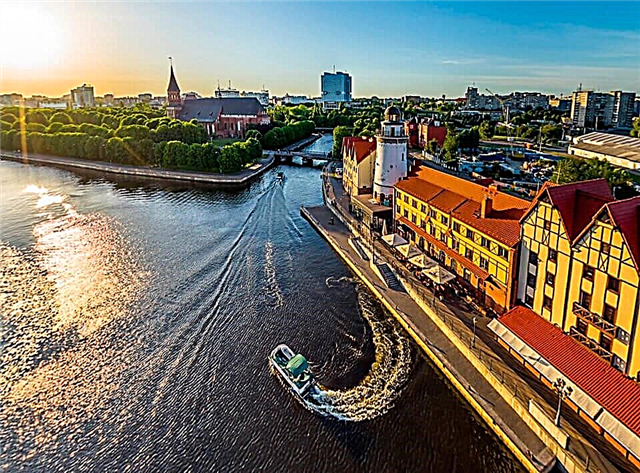The history of the ancient Greek city of Ephesus dates back to the 12th century BC - it was then that its construction began. As it developed, the city flourished and eventually turned into the largest trade center in Asia Minor, and for good reason, because Ephesus was patronized by Artemis - the beautiful goddess of fertility and protector of animals, hunters and future mothers.
Pious townspeople who venerated her, it was decided to build a temple to worship her and in her honor. When planning the construction of this unique structure, they pursued two goals, one of which was the availability of a place to worship the revered deity, and the other was to attract flows of tourists to their city, which could increase the city budget.

Of course, the hands of the townspeople did not build the Temple of Artemis in Ephesus - for its construction, the most famous architect in those days, Harsephron, arrived from Knossos, and according to his idea, the building was planned to be erected from real marble. But it should have turned out not to be an ordinary building accepting parishioners, but a real temple, surrounded by two rows of columns, striking in their impressive size. The great master Harsefron was distinguished by outstanding engineering talents, so he put into his project the most daring and original ideas that could only be embodied at that time in real conditions. But the intervention of a specialist did not affect the budget of the city at all - the ruler of Ephesus could afford to fork out for the construction of such a solid building.
Subsequently, the built temple did not obey the authorities of Ephesus. It was an independent political unit, and was ruled by a college of priests. If any of the townspeople wanted to acquire the right to immunity, he had to enter the territory of the temple without a weapon in his hands.

Features of the construction of the Temple of Artemis of Ephesus
However, not everything went as smoothly as the architect wanted. And the first difficulty that he had to face was the absence of a large deposit of marble and limestone. But the city authorities did everything possible to ensure that the necessary materials were found in sufficient quantities, and after a while the temple was successfully built. Concerning 127 marble columns, which were the "face" of a unique design, they were transported to the construction site directly from the quarries, and workers for their delivery traveled a dozen kilometers, because the construction site and quarries were located far from each other.
In order to prevent the destruction of the temple during an earthquake, and the history of Hellas has many of them, it was decided to erect a structure for worshiping Artemis in a swampy area. Construction began with the digging of a huge pit, which was later filled with charcoal and wool. Such a "filling" of the foundation of the temple was supposed to serve as a guarantor of its stability under any circumstances, since tremors during earthquakes in that area had a very different power and were capable of destroying any structures.

The load-bearing structures of the temple were represented by marble columns, the height of which reached 20 m. The non-lifting blocks from which they were assembled were first put in place using special blocks, and only after that they were fastened with metal pins. When the building was fully erected, and a roof appeared on it, artists began to work, decorating it with ornaments and sculptures.
Why did the Temple of Artemis eventually become one of the seven wonders of the Ancient World? The fact is that the 15-meter statue of the goddess inlaid with gold and precious stones became the decoration of its main hall. And the most talented sculptors and artists, famous for their skill throughout ancient Hellas, had a hand in the decoration of the premises. Rumors about a shrine of unprecedented beauty almost instantly spread throughout the ancient land. So the Temple of Artemis, due to its uniqueness, was ranked among the wonders of the world. And to this day, it is considered the largest temple of the ancient classics.larger than the Parthenon itself - a landmark of Athens. The greatness of the Temple of Artemis can be judged even by only one size of its platform - it occupied 131 m in length and 79 m in width.

Legends associated with the construction of the Temple of Artemis of Ephesus
Like any construction of ancient antiquity, the Temple of Artemis of Ephesus is shrouded in legends. According to one of them, the history of the appearance of the temple begins with a clash of two rams, who did not have enough reason to disperse peacefully, and one of them at a gallop crashed into the rock with strong horns. She could not bear the force of the blow, and a piece fell off from her. The shepherd, who witnessed the clash of the rams, saw a cut of the whitest marble on the rock. Soon after this event, the ruler of Ephesus decided to build a temple, and marble for this purpose was taken from the indicated place, and the shepherd himself, who was called Pixodor, was later included in the Gospel as the one who brought the good news to the people.
And here is another story related to the construction of the temple directly. Due to the fact that its construction was planned next to the Kaistra River, which is surrounded by swampy soils, all additional work was carried out 12 km from the construction platform itself. The heaviest and huge columns intended for the temple had problems with their transportation. But the architect Harsefron showed ingenuity here too, proposing to make holes in both ends of the columns. Metal rods were inserted into these holes, to which wheels were attached. So the uncomfortable columns were delivered to the platform of the future temple - on wheels, but by bulls, stubbornly moving them with the help of cables.

However, the talented Harsefron did not have time to complete what he had begun to the end completely - he did not have enough life. The business was continued by the architect Metagen, his son. Whatever it was, but approximately by 430 BC. the construction of the temple was still completed, and more than a thousand names of sculptures created by the most famous artists appeared on the display of city residents and guests of Ephesus. Of course, most of the sculptures were represented by the figures of the Amazons, because, according to another ancient legend, it was they who at one time founded the city of Ephesus.
The following can be said about whether the Temple of Artemis in Ephesus could replenish the city's budget. Given its location at the main economic crossroads, from the very first days of its existence, the temple was remarkable for all residents and visitors of the city who did not skimp on donations. And they left them in the form of the most expensive goods and valuable jewelry.
Who destroyed the Temple of Artemis at Ephesus?
According to historical annals, the temple first suffered at the hands of Herostratus in July 356 BC. e. He explained his barbaric trick by the emergence of a wild desire to become famous at any cost. As one of the legends testifies, on the night of the burning of the temple, the goddess Artemis was busy giving birth to her son Alexander the Great, so she could not save the temple built in her honor. Subsequently, the matured Alexander planned to restore the structure that had suffered at the hands of the barbarian, but the townspeople did not support him. And only when the son of Artemis was no longer alive, the Ephesians nevertheless restored the divine temple on their own.
Subsequently, the matured Alexander planned to restore the structure that had suffered at the hands of the barbarian, but the townspeople did not support him. And only when the son of Artemis was no longer alive, the Ephesians nevertheless restored the divine temple on their own.
The adventures of the majestic wonder of the world do not end there. In 263 A.D. it was destroyed again, but this time the Ephesians took the trouble to restore it quickly.Their desire to put the temple in order was explained by the fact that many townspeople became Christians immediately after they saw the split of the altar of Artemis into many parts. This event is described in the book of Acts of John in the 2nd century by one of the Apostles. So in the 4th century A.D. many Ephesians adopted Christianity, but the Roman emperor Theodosius desired to close all pagan temples. And so in 401 A.D. the temple suffered for the third time - now from a group of people led by John Chrysostom. But the enterprising Ephesians adapted the remains of the temple for the construction of other new buildings. Nature itself grieved because of the perfect looting, and hid the structure under the ground, undermining it with the waters of an underground river. Gradually, the Temple of Artemis in Ephesus was forgotten.
Restoration of the Temple of Artemis of Ephesus
However, after one and a half thousand years, the archaeologist Wood, who studied the area of ancient Hellas, discovered the place where the majestic temple stood, and even found some of its remains, including the foundation. With more detailed research, it was possible to find traces of that version of the temple, which was burned by Herostratus.  Today, the site of the Temple of Artemis is marked by a single restored column surrounded by ruins. According to historians, if the temple had not been destroyed and in its original form would have survived to this day, it would easily overshadow any masterpiece of modern architectural art. However, all that our contemporaries can admire on the land of ancient Hellas is one surviving column.
Today, the site of the Temple of Artemis is marked by a single restored column surrounded by ruins. According to historians, if the temple had not been destroyed and in its original form would have survived to this day, it would easily overshadow any masterpiece of modern architectural art. However, all that our contemporaries can admire on the land of ancient Hellas is one surviving column.











